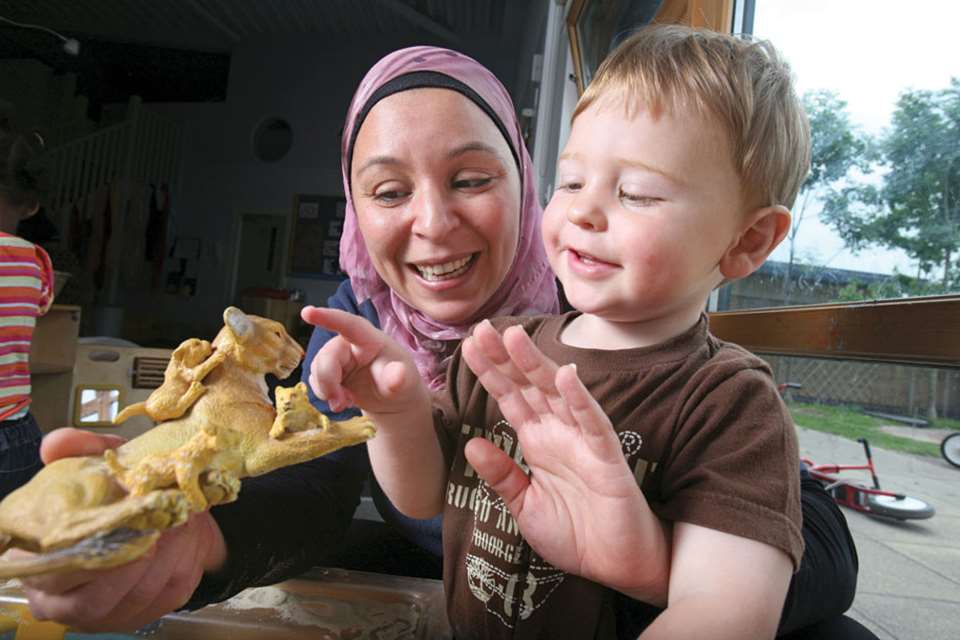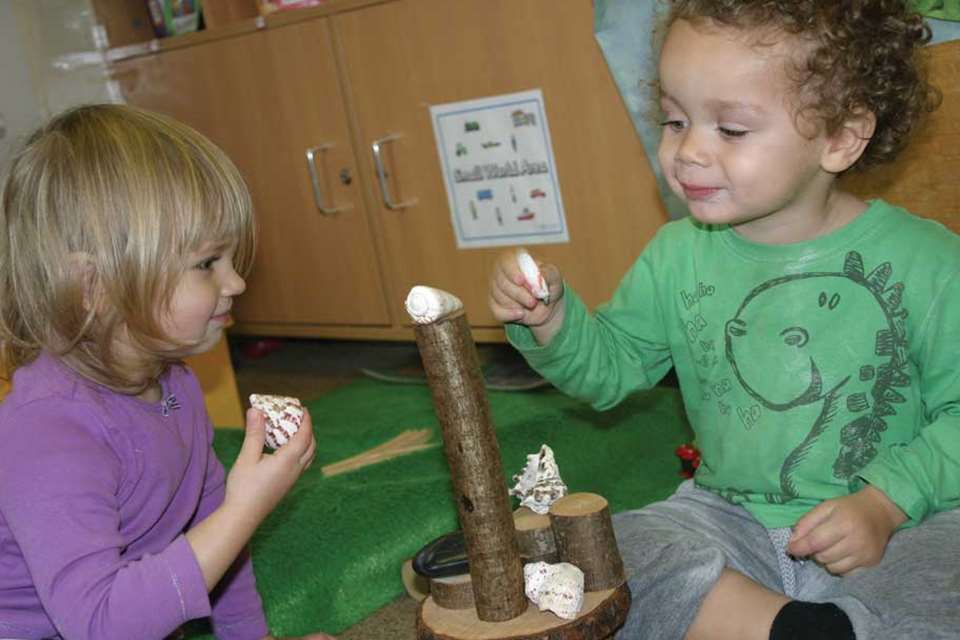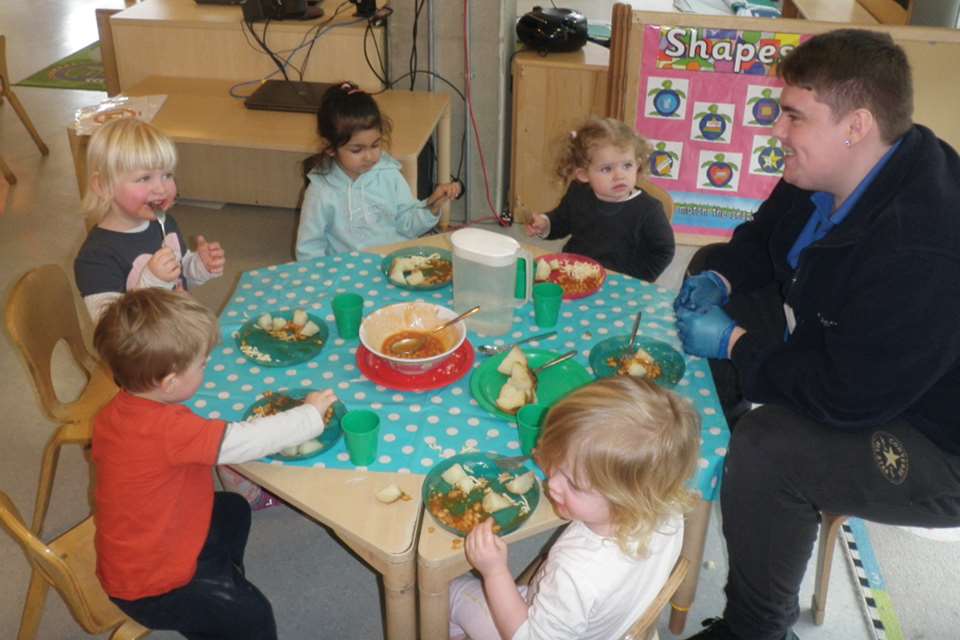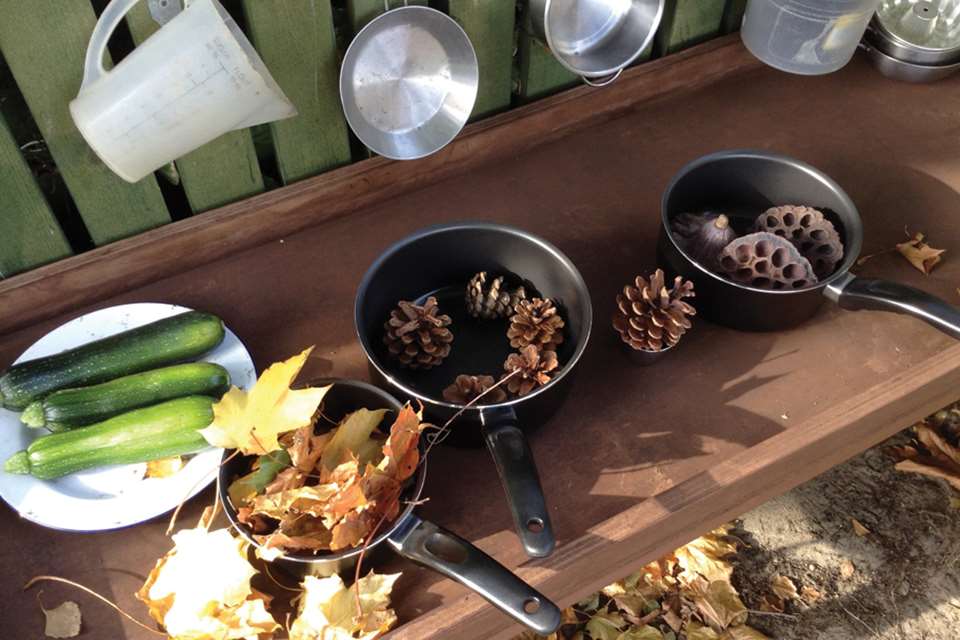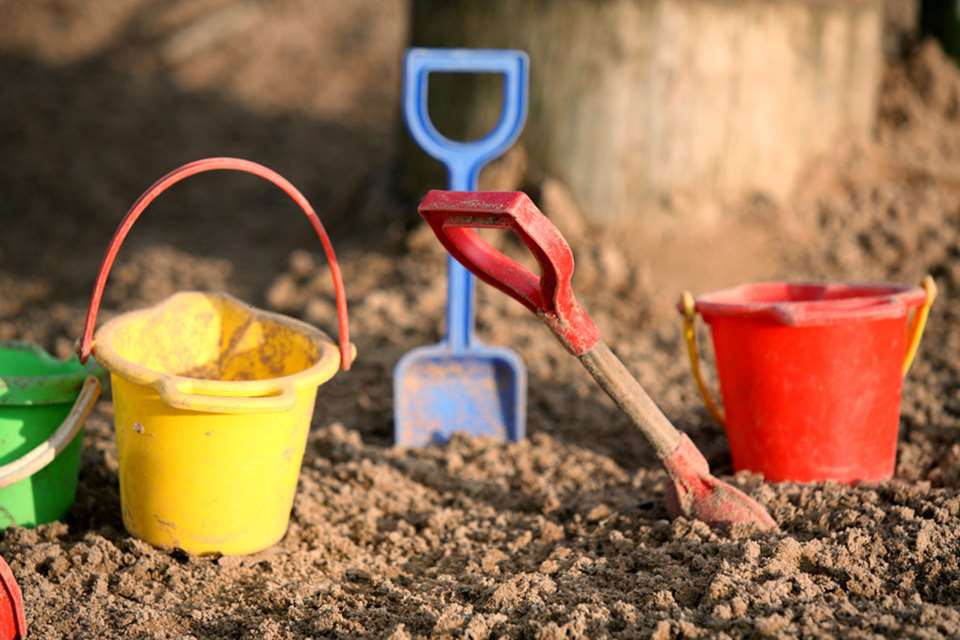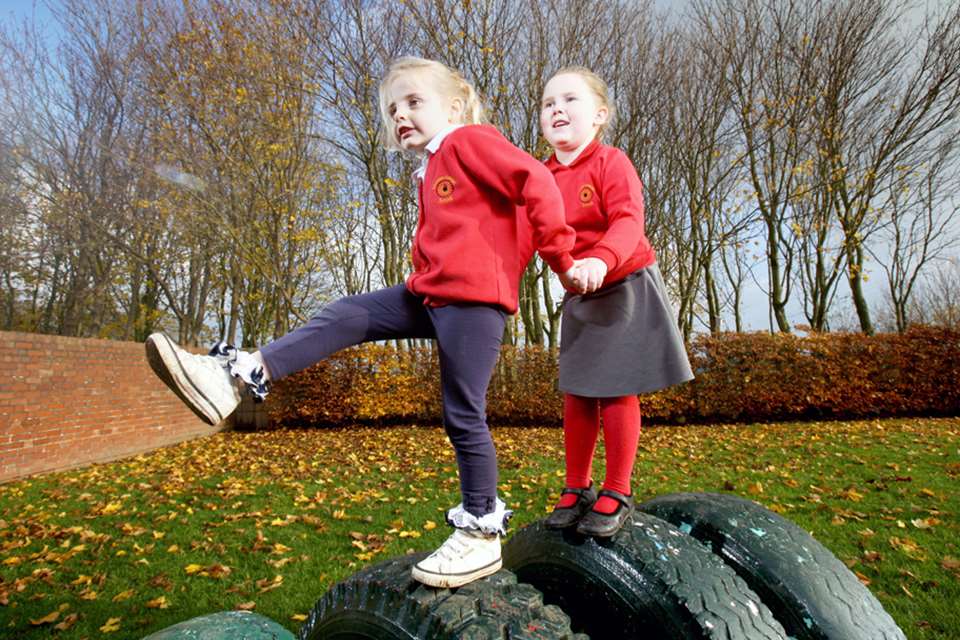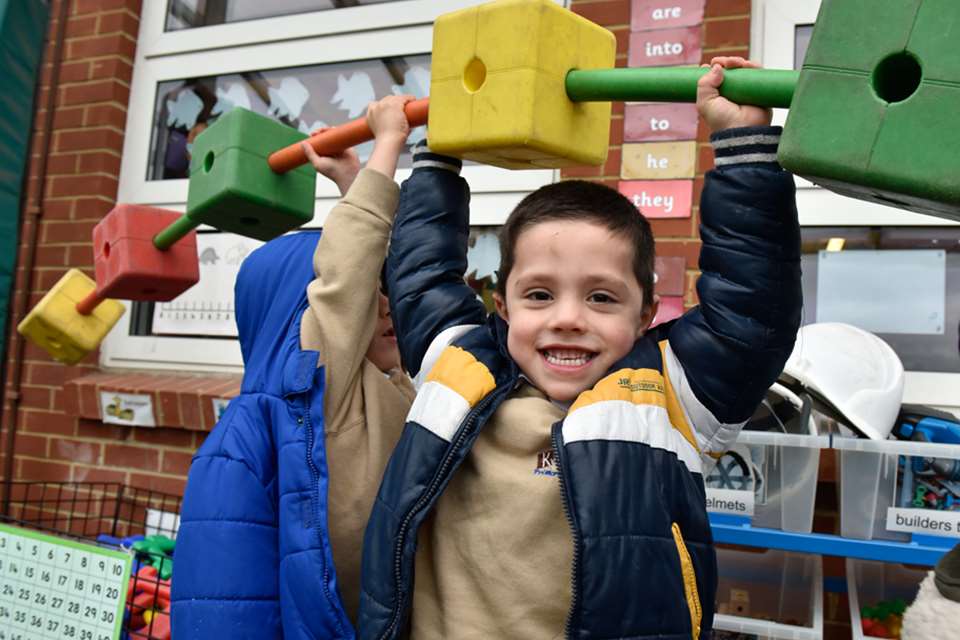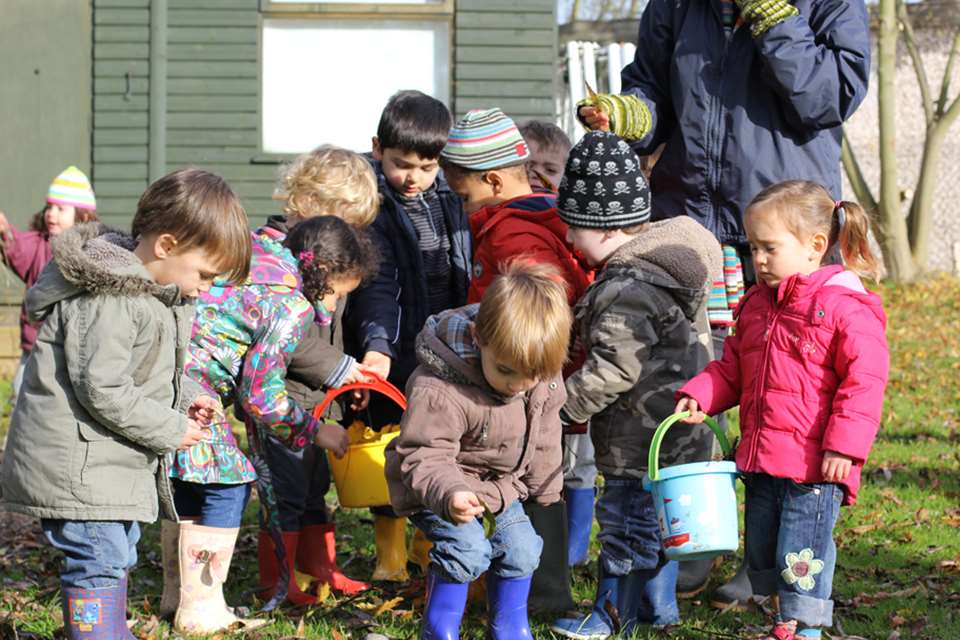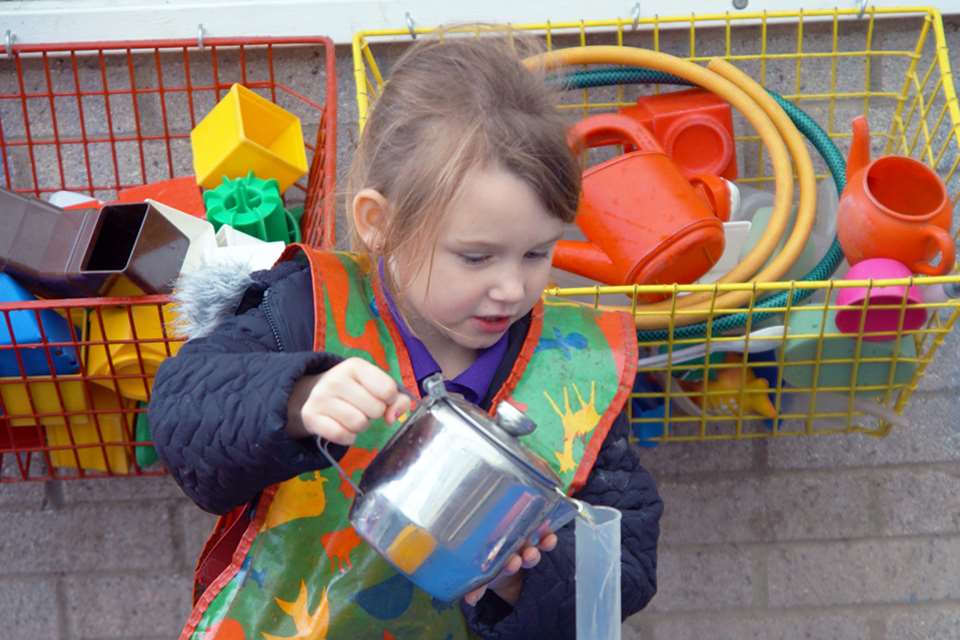Early Years in School: Two-Year-Olds - The 3Rs
Julia Manning-Morton
Monday, January 25, 2016
With more two-year-olds heading for a school-based setting, Julia Manning-Morton offers some starting points for effectively meeting this age group’s needs
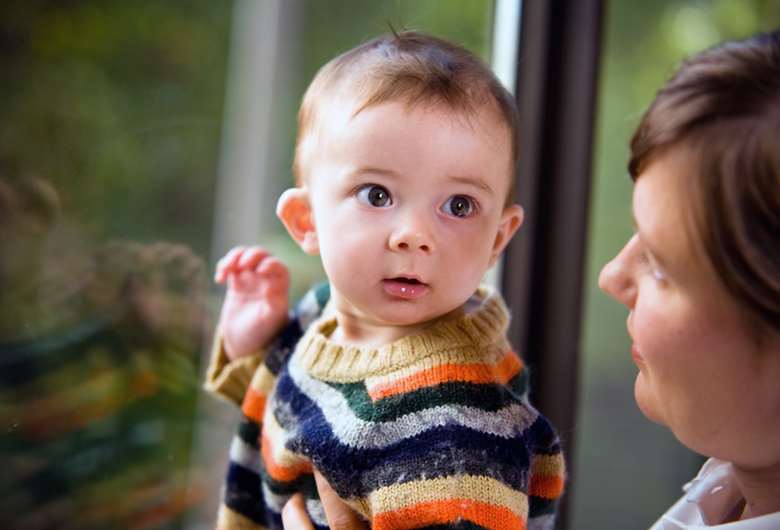
The Government’s commitment to fund a free education place for the 40 per cent least advantaged two-year-olds in England – some 260,000 children – has left local authorities searching widely for settings that might provide these places. In some cases, they are looking to schools to develop provision for this age group.
Schools, though, should be under no illusion that supporting the learning and development of two-year-olds is an easy undertaking, requiring only a simplified version of the curriculum for older children.
In fact, such a top-down approach will only set off a chain reaction of problems: inappropriate expectations and practices, such as large and prolonged circle times or children being sat at tables to concentrate, will result in challenging behaviours that confirm practitioners’ negative view of two-year-olds, which will give the children a negative view of themselves because they are continually frustrated and in trouble.
The importance of developing effective, high-quality provision for two-year-olds cannot be over-emphasised. While children with secure, nurturing home lives may survive poor-quality provision without a negative effect on their outcomes, those with difficult life experiences will not.
Attending a setting that does not provide secure, warm and consistent care through effective key person relationships and lots of interesting, hands-on, active play, or fails to give skilled support and advice to families, is a double whammy of disadvantage.
What I aim to do here is set out key aspects of a two-year-old’s development and suggest schools are guided by a new set of 3Rs when planning their provision, that is (see box):
- relationships
- routines; and
- reflective, knowledgeable practice
KEY THINGS TO KNOW ABOUT TWO-YEAR-OLDS
‘I am two!’
- Two-year-olds are not just more active babies, neither are they less able three-year-olds; they are two!
- Developmental changes are very rapid at this age; a child who is just two is very different from a child who is nearly three.
- Two-year-olds share a common characteristic of emotional and behavioural changeability, veering between apparently opposite states.
‘My parent knows me best’
By two, children will have developed distinct styles in their approach to life, learning and other people. They will also have already absorbed a huge amount of understanding about what is expected of them according to their family position and culture.
Some will be expected to be more independent than others. Some will be used to being a part of a large group; others not. Practitioners cannot hope to provide well for a child without the benefit of parents’ depth of knowledge about these things. Daily communications between parents and practitioners are essential and may include:
- verbal exchanges at the beginning and end of the day
- written exchanges – a daily diary that goes between home and the setting
- regular consultation meetings
- involvement of parents in collecting and commenting upon observations and assessments.
‘I have to feel secure’
Knowing that there is a particular person who thinks about them, looks out for them and helps them when they are struggling is crucial to a two-year-old’s well-being: in early years settings, this is the ‘key person’ – a statutory role under the EYFS.
Also central to a two-year-old’s developing sense of self and understanding of relationships is exploring the balance between dependence and independence. By responding sensitively to a child’s changing needs for comfort and reassurance and for exploration and independence, the key person helps them to develop a feeling of safety and trust while being outgoing and competent.
- Two-year-olds should have continuity and consistency of relationships with a key person and with their peer group.
- The key person is responsible for building a close, trusting relationship with the child. This is underpinned by the key person spending focused time with their key children, particularly at physical care times.
- Two-year-olds need gradual introductions to a new group or setting over a prolonged period that suits the child and their family.
- Daily changes of group, environment and practitioners should be kept to a minimum.
- Routines, environment and play opportunities should balance the new, exciting and challenging with the familiar, safe and secure.
At two, many children have to cope with major changes in their lives over which they have no control
At two, many children have to cope with major changes in their lives over which they have no control. Many who start attending a setting will be separating from their parents/carers for longer periods for the first time. Many will have a new baby in their family. Some will move house, and a few will even move family.
These experiences are perplexing and stressful to a two-year-old, particularly if they are given no explanation of why these things are happening. If practitioners consider this, they will understand the tantrums that two-year-olds can have.
The unpredictability of their lives also means two-year-olds often have routines or rituals that give them some measure of control over their immediate world and help them to manage scary situations. These rituals need to be honoured and the child’s fears met with sympathy and understanding.
‘I’m learning about who I am and how other people work’
Learning about who they are, their capabilities and how they are the same and different to others is a central focus for two-year-olds. Practitioners’ different responses and expectations of children according to their gender, ethnicity and/or ability/disability will impact their developing sense of self and attitudes to differences between people.
- Make sure that the environment is full of objects that reflect each child’s home background and with which they are familiar.
- Learn key words in children’s home languages.
Independence
- Two-year-olds have begun to establish a view of themselves as an autonomous person who is keen to assert their independence of thought and action. This means having their own agenda, practising making decisions, asserting preferences and struggling with choices. But as they are as yet inexperienced, they may assert their newfound independence and autonomy by refusing to co-operate and frequently changing their minds.
- Build in many opportunities for choice and autonomy such as allowing the children to serve their own food at the table, to help set out the sleep mats or to put on their boots to go outside. Allow plenty of time for these activities.
- Give choices within the boundary of what must happen – ‘It’s wet outside so you need to wear shoes. Do you want these lovely red Wellington boots or your super blue shoes?’
Intense feelings
Two-year-olds experience their feelings with great intensity, so their self-control and ability to keep others’ needs in mind is easily overpowered, resulting in conflict.
- Having clear, reasonable boundaries that are implemented and reinforced consistently (but not rigidly) helps two-year-olds feel safe and contained.
- A behaviourist approach of naughty steps, time-out chairs or sticker charts do not help children to understand their feelings and behaviours sufficiently. Neither do they consider the distressing early experiences that may be triggering a child’s behaviour
Theory of mind
- Two-year-olds are interested in and keen to be with other people, but they are still in the early stages of developing ‘theory of mind’ so their ability to consider or understand others’ needs fluctuates. This means they find the concept of sharing and taking turns difficult to follow.
- Make sure that there are duplicates of all key items of equipment – books, bikes, balls, chairs, cups – so that conflict over the ‘big bike’ or ‘red cup’ is reduced.
- Organise spaces for solitary as well as group play, as this reduces the need to compete.
‘I learn by moving and doing and through sensory experiences’
Two-year-olds love and need to be active and engage in activity that enables them to refine the phenomenal physical skills gained in the first two years. Their fondness for learning while they are moving about is sometimes seen as ‘flitting’ and not concentrating, although if observed closely, it can be seen that, in fact, they are pursuing a particular idea or exploring a particular schema, such as transporting or trajectory.
- Do not expect two-year-olds to sit still for prolonged periods; it will result in the kind of disruptive behaviours some adults expect.
- Provide adequate uncluttered space so children can manoeuvre themselves and objects. Have fewer tables and chairs to aid mobility and support floor play.
- Create environments inside and out that offer a manageable amount of risk and sufficient challenge.
- Direct access to outside for sensory exploration of the natural world and fast-developing physical skills is best. Include areas for digging, planting and sand, water and mud, tunnels, tyres, logs and grass as well as soft surfacing and concrete.
Manipulating objects
Manipulating objects and tools leads to understanding how the parts work and the effects of the child’s actions on the object. This also leads to using objects and tools imaginatively.
- Ensure that you have a lot of each type of construction (including many components with wheels and many figures) so that ideas can be realised.
- Review the size and level of difficulty of your resources. Are they a good match with the manipulative skills of the children? Too easy and children will get bored, too hard and they may get discouraged.
- Two-year-olds’ limited understanding of time and their fascination with process and detail mean that they are not focused on end products. Focus on the process of exploring creative materials and the different use and effect of tools in play.
‘I want to communicate. I love music, stories and rhymes’
Two-year-olds already have a refined understanding and use of body language, gesture, facial expression and voice tone and are now daily adding new words to their vocabulary – their language use is becoming more sophisticated.
These developments enable two-year-olds to express themselves more clearly to others; however, they are still regularly misunderstood or misinterpreted by adults and other children, particularly adults who do not know them well. This can lead to a lot of frustration for the child.
- Listening to and telling stories and singing songs should be a frequent experience for two-year-olds.
- Stories and singing are best one-to-one or in groups of up to four children, where background noise is minimal and children can make themselves heard: key group time is ideal for this.
- Practitioners need to listen as well as talk.
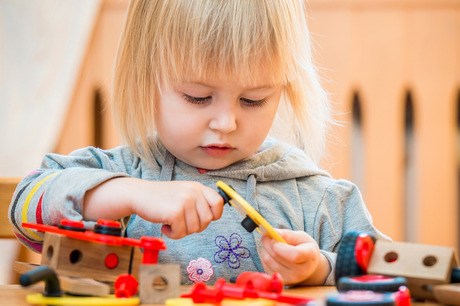
RELATIONSHIPS, ROUTINES, REFLECTION
The three overarching aspects of provision for two-year-olds are:
Relationships
Establishing an effective key person approach that offers children consistency of care and continuity of experience between home and setting is essential. To be effective, a key person must be able to:
- tune in to the communications and emotional needs of very young children and offer sensitive responses and support
- communicate well with children and other professionals and colleagues
- build mutually respectful and trusting relationships, and work closely with parents.
Routines (or hidden curriculum)
Two-year-olds are developing their self-concept and understand a lot of what adults think about them through the non-verbal communications of touch, gesture and facial expression. They also spend a lot of time being physically handled by adults in care routines, when they are learning a lot about themselves, others and relationships.
This means that curriculum planning must be holistic, covering all the child’s experiences, and include:
- how two-year-olds are greeted on arrival and are helped to settle in to the day
- how snack and mealtimes are organised to be an enjoyable social experience
- how washing, changing and dressing cater for emotional and physical dependence but still facilitate growing independence and autonomy
- how there is consistency of experience by having the key person carry out intimate care routines most of the time
- how the structure of the day is predictable but flexible enough for children’s needs and interests to be met. Adult-imposed changes in environment and activity should be minimal
- how the transitions between aspects of the day are managed so children are given advanced warning, an element of choice and are involved. For example, ‘When we have finished eating tea, it will be time to get ready to go home’
- how children and families are supported in reuniting at the end of a session
- how the environment supports active, hands-on exploration, the need to feel safe, secure and ‘at home’.
Reflective, knowledgeable practice
Practitioners working with two-year-olds need:
- time and support to reflect on professional practices in their key person relationships and on their provision for two-year-olds – working with two-year-olds can be physically and emotionally challenging for practitioners. To be effective they need high levels of skill, knowledge and understanding of themselves as well as of the children. Therefore, practitioners need frequent and regular supervision opportunities to reflect on their practice with skilled, knowledgeable leaders and managers
- an understanding of each individual child and their socio-cultural contexts – in any group of two-year-olds, each child will be different from the others in maturity, interests and dispositions. By expecting differences between children, practitioners will avoid practices that pressurise two-year-olds into doing the same thing at the same time. At this age, a particular special need or disability may become more apparent or parents and practitioners may start to notice developmental differences that they have not noticed before. This means that practitioners need to be skilled and knowledgeable about completing education and healthcare plans in close partnership with parents
- to be reflective – by talking to parents and undertaking frequent observations, practitioners will understand the context of each child’s development and can then adopt a flexible approach – adapting their plans, the play environment, play opportunities, care routines and altering their expectations of behaviour as each child in the group grows and develops in their own way.
- a thorough knowledge of child development and how two-year-olds learn
Practitioners working with two-year-olds require the highest levels of skill and knowledge gained through good-quality, relevant training at a higher level.
FURTHER READING
Elfer, P et al (2011). Key Persons in the Early Years: Building Relationships for Quality Provision in Early Years Settings and Primary Schools. Routledge
Goldschmied, E and Jackson, S (2004). People Under Three: Young Children in Day Care. Routledge
Nutbrown, C and Page, J (2008). Working with Babies and Children: From Birth to Three. Sage
Manning-Morton, J and Thorp, M (2015). Two-Year-Olds in Early Years Settings: Journeys of Discovery. OUP.
Lindon, J. What Does It Mean To Be Two? (2005), Step Forward Publishing; The Key Person Approach: Positive Relationships in the Early Years (2010), Practical Pre-School Books
Mathieson, K (2013). I Am Two! Working Effectively with Two Year Olds and Their Families. Early Education
Cheshire East, Are You Ready For Me – Now I’m 2? www.cheshireeast.gov.uk
O’Connor, A (2012).Understanding Transitions in the Early Years: Supporting Change Through Attachment and Resilience. David Fulton
Hughes, A and Read, V (2012). Building Positive Relationships with Parents of Young Children: A guide to effective communication. Routledge


